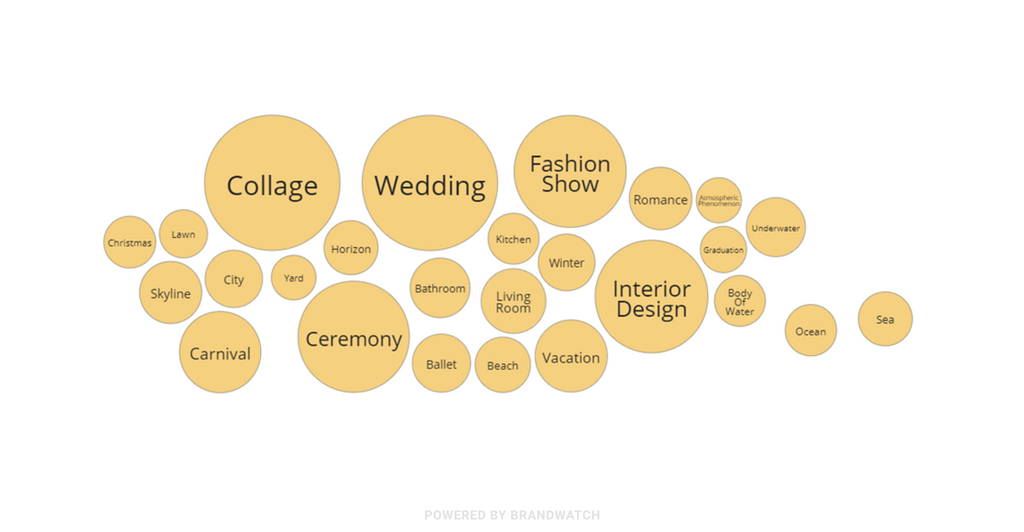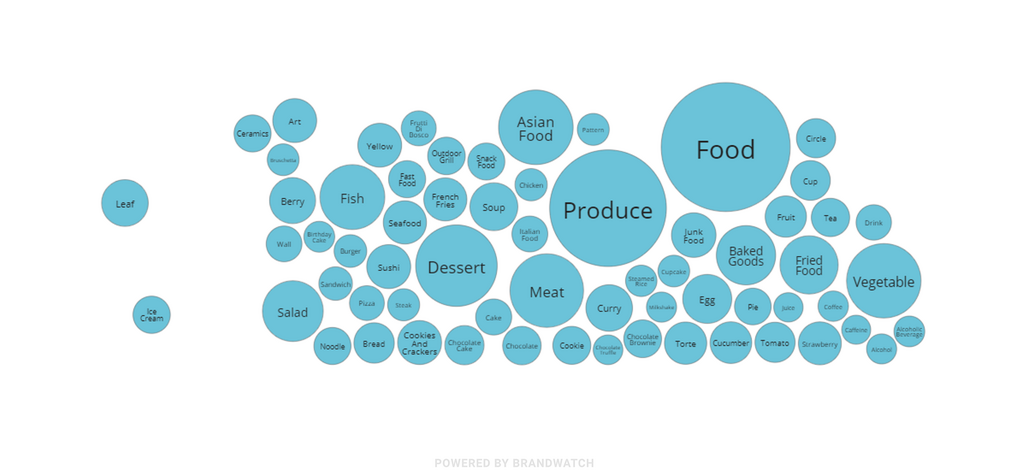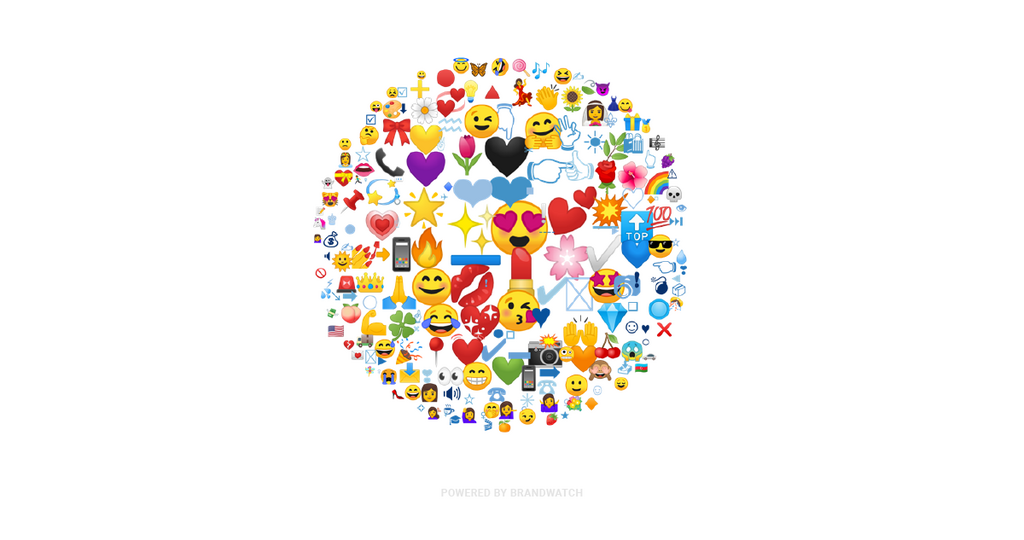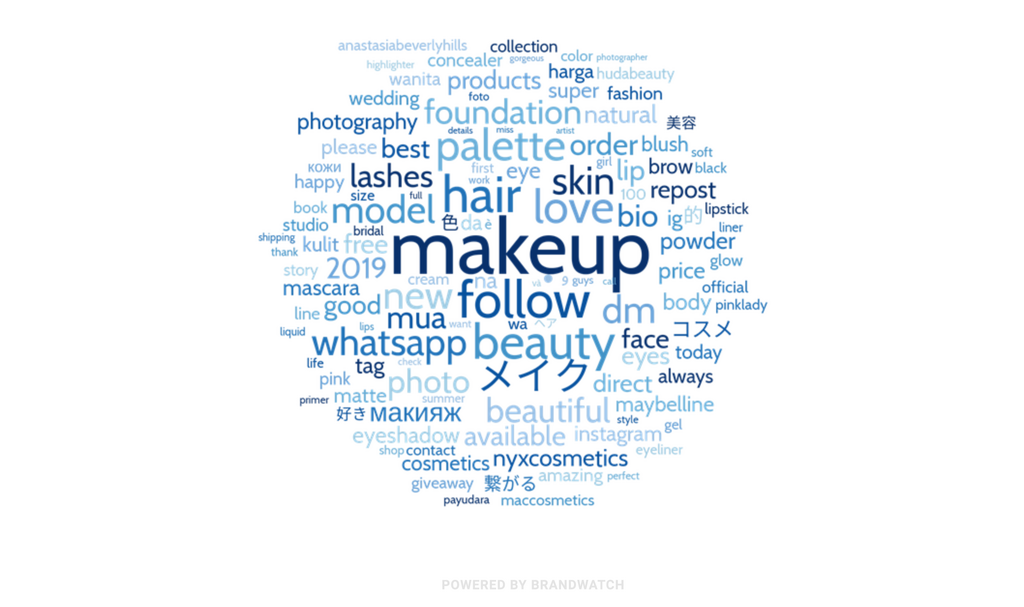GUIDE
A Guide to Instagram Data
How to make the most out of Instagram’s image-first content
GET IN TOUCH TO CHAT ABOUT INSTAGRAM ANALYTICSInstagram has 1 billion monthly active users and receives millions of posts a day, but it’s more than just an app for sharing photos, videos, and livestreams.
Because people document their experiences, pour out their thoughts, and engage with other users and brands on the platform, Instagram is a treasure trove of insights.
Using simple hashtag analysis, brands and agencies can:
- Discover new trends
- Gain insights from cutting edge image analysis technology
- Engage with niche communities
- Inform product development
In this guide, we’ll take you through each of the above, with examples from conversations around food and cosmetics on the platform.
Discover new trends
Celebrities and fashion magazines may have dictated trends traditionally, and of course they still play an important role. But Instagram has democratized the process of something becoming a trend – it’s a more organic platform that can promote both mainstream trends and those that crop up within different subcultures.
It’s possible to spot trends within a particular community or around a particular thing, as well as to take a look at broader scale movements on the platform.
A good demonstration of the different ways to look at trends is to check out Insta’s food scene.
#FoodPorn: The trending foods
Let’s start by considering #foodporn – one of the most popular hashtags on the platform. At the time of writing, more than 200 million posts contain the phrase.
By tracking this hashtag, we can look at troughs and peaks over time and when people are most likely to post about their snacks or meals. That’s fine, but we can go much deeper, too.
We can also look at the particular food types that are being written about most within the #foodporn conversation.
Right now, the doughnut is the trendiest food. These deep-fried delights have gone gourmet, with a significant amount of growth in upscale doughnut shops. Visually appealing and delicious, with no shortage of seasonal offerings, doughnuts are the current #foodporn king.
Next on the list is something a bit healthier – matcha. It’s easily incorporated into different meals, has well known health benefits, and the vibrant green shade photographs well.
Third is the millennial-friendly avocado toast. It’s easy to make at home, is highly customizable, and has stood the test of time, having been a trendy online food for a while now.
#Foodporn trends: The driving forces
Some of the trending foods are influenced by different cultures, like bubble tea (which originated in Taiwan in the 1980s), or halloumi cheese (which is from Cyprus), or purple yam (which is popular in Japan).
Others food types are reflective of trends like veganism and vegetarianism, like zoodles (zucchini noodles) and the famous Impossible Burger.
Political changes may be behind the popularity of CBD food products like CBD coffee on Instagram.
And, of course, seasonal trends are reflected – florals for spring may not be surprising but edible flowers aren’t exactly what you’d expect to find.
Take advantage of cutting edge image analysis
Since Instagram is a visual-first platform, image analysis is a key way to make the most of the content. Forsight’s image analysis offers insights on the logos, objects, scenes, and actions present within a picture, meaning you can examine the common contexts within thousands of pictures automatically. This goes beyond text analysis to look at exactly what’s in the picture.
Common scenes: #Makeup
As an example, we’ve taken a look at posts tagged with #makeup.
What are the most common scenes present in the images shared alongside this hashtag?
Weddings and ceremonies are among the top occasions – these celebratory events provide opportunities for people to showcase their best looks.
But it’s also interesting to see seasonal influences (like Winter, Christmas, and Carnival) pop up, as well as scenes which include bodies of water or the ocean. All of these can give clues as to how makeup items or looks are used and showed off, as well as inspiration for community managers within the field.
Common objects: #Foodporn
Back to food, and we’re using machine learning to find out which food types are being photographed most. Again, we’re looking at posts containing #foodporn, but the analysis here is to do with what’s in the picture, not what’s in the text.
It’s a real mix of items, from ingredients to meal types to receptacles. Baked goods, fried food, junk food, and desert suggest photogenic comfort food is very popular, although produce, vegetables, and salad are also particularly prominent.
There’s some nice cross over with the text mentions of food types as discussed above, but this technology adds another layer to the original analysis and groups foods together.
Engage with niche communities
Instagram is home to many communities, from the mainstream to the obscure. These communities have sprung up organically around different interests, and therefore those posting about particular niches are often well-versed in those topics.
It’s very difficult to engage with communities if:
- You’ve not done your homework around what will resonate
- You’re not adding to the conversation, you’re just making noise
It’s important to study how your industry is discussed, the visual trends that emerge, and how your brand might be able to add to this overall. Whether you’re going for organic reach with regular Instagram posts or with targeted ads, get to know your target audience before jumping in.
For example, you might notice that your audience are posting within particular contexts, or with particular objects. Definitely pay attention to that (see the above section on taking advantage of cutting-edge image analysis).
But also pay attention to the language they’re using. What hashtags are they using? What’s the tone? And, importantly, which emojis are being used?!
#Makeup emojis
Emojis may seem like small details, but an ill-informed use of the eggplant or the overuse of an unpopular emoji can make a brand seem disconnected from the wider community.
While some emojis have universal meanings, communities will interpret and use them for their own reasons, and it’s important to be aware of what those interpretations and uses are.
A speedy insight we found by looking at the emojis #makeup posters use is that often they aren’t used for their shape (what they are), but instead they’re used because of their color.
For example, we found that the flower emoji is used to signify pink makeup or soft looks. Meanwhile, the cherry emoji is used to signify splashes of red. Launching a new shade of green lipstick? Perhaps a green heart or a four leaf clover will be a fitting accompaniment to your post.
Inform product development
So far, we’ve looked at discovering trends, image analysis, and engaging with niche communities. Bringing all these together, there’s a lot that product teams can get out of Instagram data when it comes to deciding on new iterations or items.
#Makeup conversations: What’s popping?
Here’s a simple example:
We delved into the #makeup conversation to see what was top of mind for beauty geeks on Instagram.
Looking at the main topics of discussion, pink, natural, and glow-y makeup products like highlighter are all very much ‘in’. There’s also a focus on hair, skin, and eyelashes. This word cloud also clues us into the brands that are a part of the trending conversation. NYX, MAC, and Maybelline are all popular.
By delving deeper into these trends, analysts can see if they’re going up or down over time. If a trend persists for long enough and the fit is right, it could be a great opportunity for a brand to jump in with a new offering that addresses it.
Meanwhile, by looking at the scenes, objects, and actions that are featured in Instagram posts around particular items, brands can get a feel for how products are used and adapted in the real world. This can help inform iterations to existing products. And, by examining how people are talking about different items (what words, hashtags, and emojis they’re using), it’s easy to come up with inspiration for new ways to market existing products.
End note
There’s so much that can be done just by performing simple searches for Instagram hashtags, and the possibilities don’t end with this guide.



